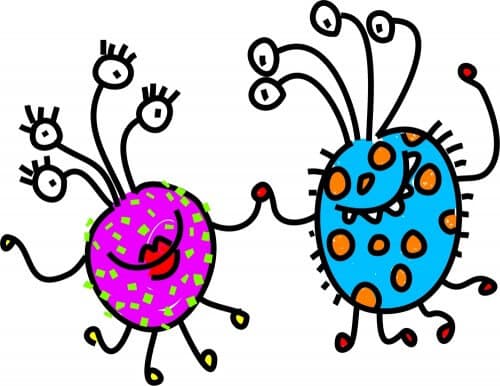Hungry bacteria can subdue drug-resistant superbugs * An approach to treating bacterial antibiotic resistance

following the news The Center for Disease Control and Prevention in the USA: We have reached the end of the antibiotic era, we bring you an article published in this month's issue of Scientific American-Israel about another approach to treating antibiotic-resistant bacteria
Scientists are turning to predatory bacteria in an attempt to defeat drug-resistant infections. Microbiologists led by Daniel Kadori, now a researcher at Rutgers University [and received his doctorate in microbiology from the Hebrew University in Jerusalem - editors], have recently focused on two such predators: Micavibrio aeruginosavorus, which sticks to the bacteria from the outside and sucks its contents, andBdellovibrio bacteriovorus which penetrates the cytoplasm of the victim and multiplies within it and at its expense. Kadori's group had previously shown that these two types of bacteria can kill violent bacteria, but no experiments have yet been done with drug-resistant bacteria. The team therefore decided to release each of the two predators in cell cultures of 14 species of drug-resistant bacteria commonly found in hospitals. As a result, the hunters destroyed a high proportion of disease-causing bacteria. The results were published on May 1, 2013 in the online journal ONE PLOS.
But will the hunters also attack human cells? In a study published in the same journal, on June 18, 2013, Kaduri's team found that the predators can kill bacteria that cause eye infections without damaging the eye cells. "Taking advantage of nature to tip the balance in favor of the host by means other than antibiotics is a really important approach," says Daniel Zurabsky, a microbiologist from the Walter Reed Military Research Center, who studies drug-resistant bacteria.
According to the US Centers for Disease Control and Prevention (CDC), each year, approximately two million patients hospitalized in the US alone contract infections that often originate from drug-resistant bacteria. Even powerful new antibiotic drugs can't solve the problem because colonies of virulent, infectious bacteria often wrap themselves in biofilms, microscopic layers of mucus that cling to almost any surface. In studies prior to the one done by Ballodi and other scientists, it was found that predatory bacteria can penetrate through the biological membranes and kill the bacteria inside. This may provide a new method of preventing the infection.
Due to the fear of possible sensitivity of the human immune system to bacteria swimming in the bloodstream, Kadori believes that the best way to treat using predatory bacteria is to "apply them to the surface of wounds or burns." He and his colleagues are now trying this way of treatment on animals with the goal of eventually moving to clinical trials on humans.

5 תגובות
Just an attempt (I'm not the "skeptical" user who usually writes here)
Please do not post.
Playing too much with genetics and such and other changes that will bring upon the human species the next mega-epidemic that will destroy 99 percent of humans. Stupid scientists, trust them to destroy the world..
What will happen if the germs that eat the food run out?
http://en.wikipedia.org/wiki/Bacteriophage
And not a word about bacteriophages...